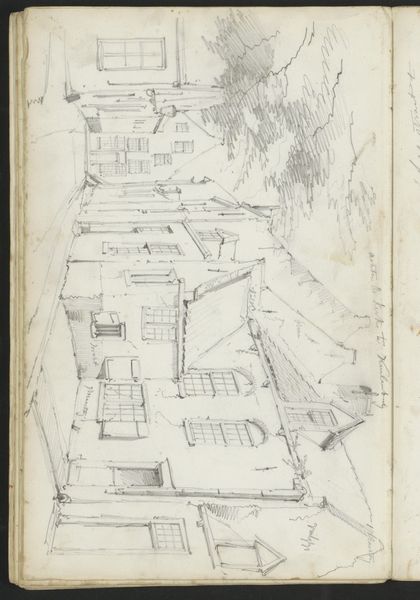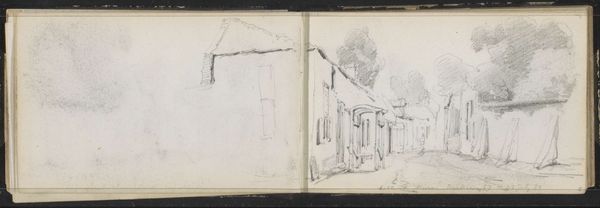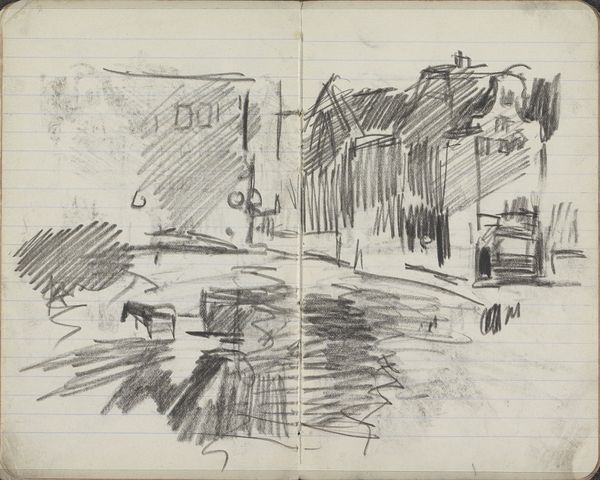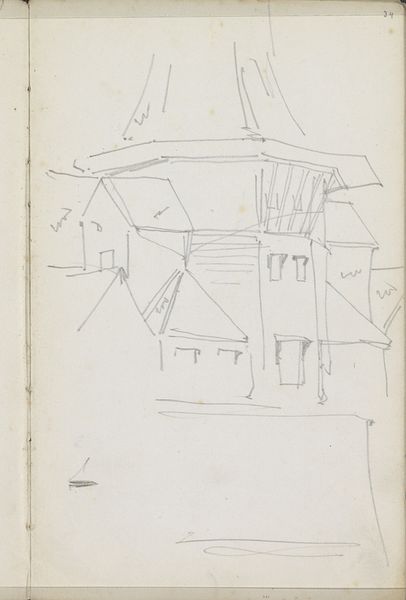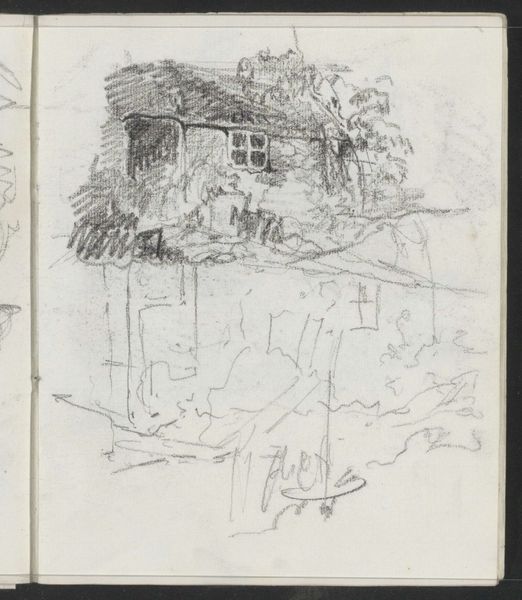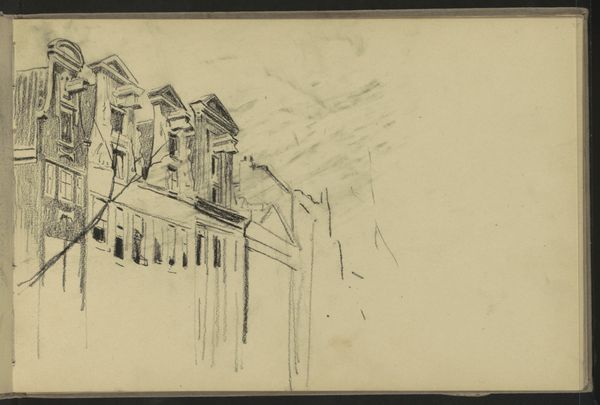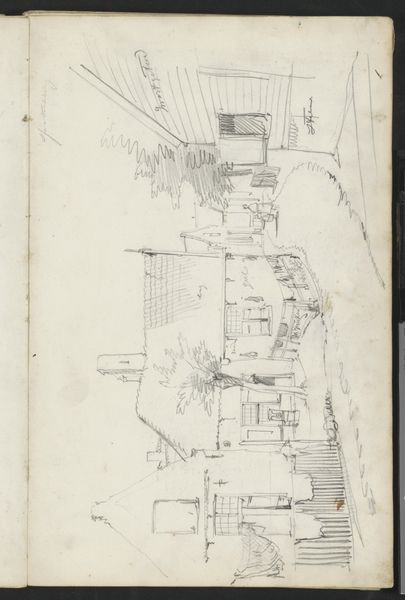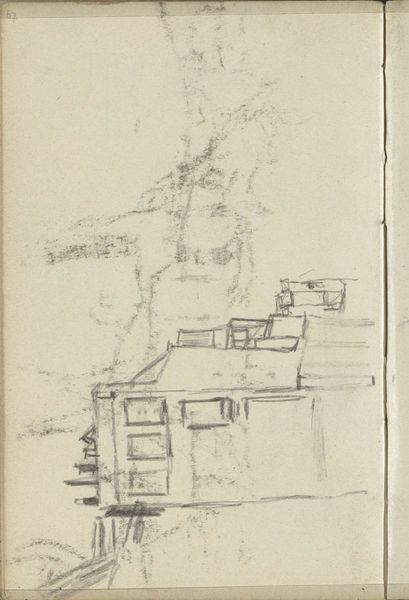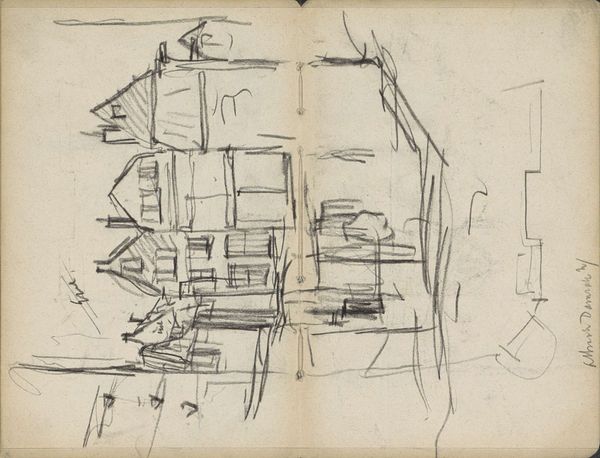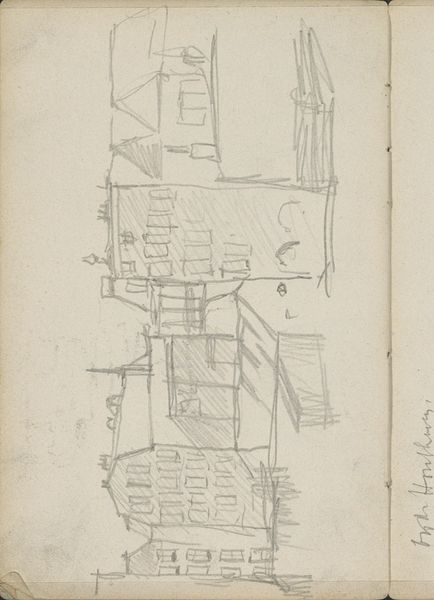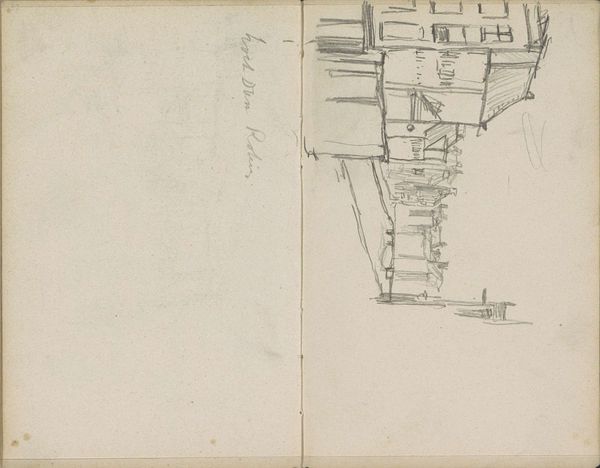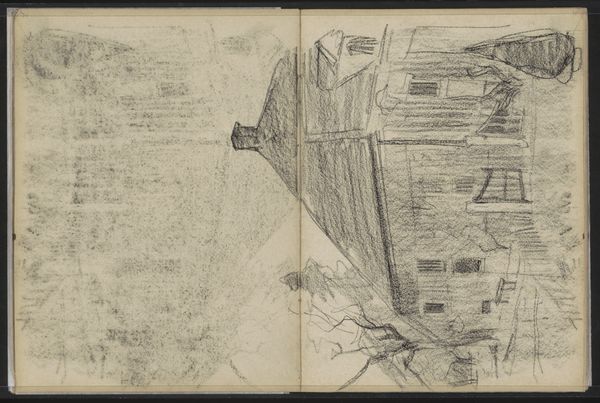
Dimensions: overall: 15.2 x 47 cm (6 x 18 1/2 in.)
Copyright: National Gallery of Art: CC0 1.0
Editor: Here we have Paul Cézanne's pencil drawing, "Landscape Near Aix-en-Provence," from 1877 to 1880. The strokes seem so raw and full of restless energy. How would you interpret this work, particularly its feeling of unresolved tension? Curator: Look closely at how Cézanne uses the pencil. Each line isn't just a contour; it's a fragment of light, shadow, and structure. There's a sense of the artist grappling with the very essence of form. This tension you feel could stem from a visual and intellectual questioning that would eventually be canonized as Post-Impressionism. Editor: So, this feeling I have is part of the historical significance? Curator: Precisely! The unfinished quality invites us to participate in the act of seeing, reconstructing the landscape ourselves. The landscape theme acts like an index. This reflects Cézanne's departure from traditional, romanticized landscapes. Notice, for example, how his cross-hatching creates volume and depth. This visual technique suggests mass and structure; he sought to represent something beyond mere surface appearances. Does that alter your first impression at all? Editor: It makes me think about the relationship between drawing and seeing; each of the artist's marks acts as evidence of a lived experience. Curator: Indeed. And Cézanne uses this drawing, in the language of an anthropologist, to document the transformation of the natural and the man-made in Provence. Each image captures this liminal point. We see both nature and urban markers that characterize the era. Editor: That tension now feels very rich. I initially saw the sketch as an incomplete work, but the intentionality behind it has become apparent. Curator: The drawing embodies an era's evolving perceptions and representations. The historical value underscores how art marks culture and time.
Comments
No comments
Be the first to comment and join the conversation on the ultimate creative platform.
